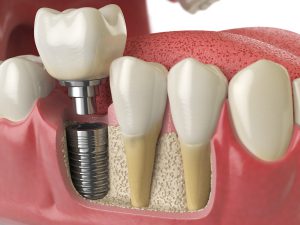Insufficient Bone: How Bone Grafting Can Help

What is bone grafting exactly?
While our jawbones aren’t as visible as our teeth, they do play a vital role in the oral health system. When our jawbones lose density, its tissue becomes narrow and sparse. Inadequate bone will contribute to future tooth loss and prevent the integration of a dental implant.
A bone graft involves placing bone, normally from a tissue bank or from a patient’s body, into areas where the bone has deteriorated. For instance, bone grafts are placed in the upper jaw below the sinus cavities because bone tends to be thin and narrow in these areas. Over time, the cells within grafted bone will seal themselves into existing bone.
The procedure itself is not too invasive and local anesthetics normally keep patients comfortable for small treatment areas. Under some circumstances, patients may opt for sedation to maintain physical and emotional comfort during treatment.
Why is bone grafting recommended for dental implants?
Bone grafting is recommended to help stabilize dental implants. An implant is a titanium component used to replace the roots of teeth. Implants are embedded directly into the jawbone and bone will ultimately fuse around the implant to hold it in place.
Since bone tissue is the foundation of an implant’s support, there must be enough tissue to hold the dental implant. Inadequate bone could cause dental implants to fail.
Our oral surgeon provides bone grafting services and places dental implants. Those interested in receiving implants should schedule a visit to determine if they are candidates for implant dentistry.
If you have suffered from tooth loss, call Charlottesville Oral Surgery and Dental Implant Center to reserve a tooth replacement consultation today.